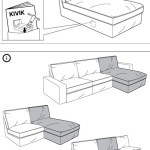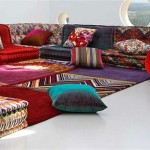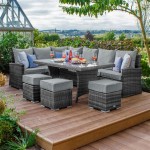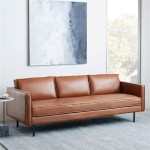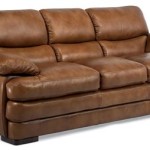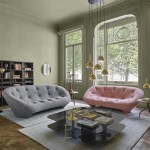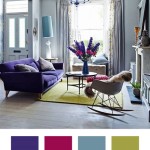What Type of Sofa Is the Most Comfortable?
The pursuit of the most comfortable sofa is a highly subjective endeavor. Comfort encompasses a range of factors, including personal preferences for firmness, style, material, and the specific intended use of the sofa. Objective metrics like build quality and durability also play a role, indirectly influencing long-term comfort by ensuring the sofa maintains its structural integrity and support over time. Therefore, identifying a single "most comfortable" sofa is impossible; rather, the ideal choice depends heavily on individual needs and priorities.
This examination will delve into several key attributes that contribute to sofa comfort, exploring different sofa types and features that cater to various preferences. These attributes include frame construction, suspension systems, cushion fill, upholstery material, and ergonomic design. By understanding how these elements interact, individuals can make more informed decisions when selecting a sofa that provides optimal comfort for their specific requirements.
Frame Construction and its Impact on Comfort
The structural integrity of a sofa begins with its frame. A robust and well-constructed frame provides the foundation for long-lasting comfort and support. Common frame materials include hardwood, softwood, and engineered wood products like plywood and particleboard. Hardwood frames, typically made from oak, maple, or ash, are known for their exceptional strength and durability. They are less prone to warping or cracking, providing a stable base for the cushions and upholstery. This stability translates to a more consistent and comfortable seating experience over many years.
Softwood frames, often constructed from pine or fir, are a more affordable alternative. While less robust than hardwood, softwood frames can still provide adequate support, especially in sofas designed for lighter use. However, they may be more susceptible to wear and tear over time, potentially affecting the sofa's overall comfort. Engineered wood products, like plywood and particleboard, offer a balance between cost and durability. Plywood, composed of multiple layers of wood veneer glued together, is generally stronger and more stable than particleboard, which is made from wood chips and resin. The quality of the engineered wood greatly impacts the sofa's long-term performance and comfort.
In addition to the material, the construction methods used to assemble the frame also significantly influence its strength and stability. Look for frames that are joined with corner blocks, metal fasteners, glue, and screws for maximum durability. Avoid frames that are held together solely with staples or glue, as these are more likely to loosen over time, leading to squeaks, wobbles, and a reduction in overall comfort.
Suspension Systems and Their Role in Seating Comfort
The suspension system of a sofa is responsible for providing support and distributing weight across the seating area. Several types of suspension systems are commonly used, each offering a different level of support, resilience, and comfort. These include sinuous springs, pocket coils, and web suspension.
Sinuous springs, also known as no-sag springs, are pre-curved metal springs that run horizontally across the frame of the sofa. They are typically spaced a few inches apart and attached to the frame with clips or brackets. Sinuous springs offer good support and are relatively inexpensive, making them a popular choice for many sofas. However, they can be prone to sagging over time, particularly in the center of the sofa, which can reduce comfort and support. The gauge and spacing of the springs influence durability. Thicker gauge springs placed closer together will provide better support than thinner, widely spaced springs.
Pocket coils, also known as Marshall coils, are individual coils wrapped in fabric pockets. These coils move independently of each other, conforming to the shape of the body and providing targeted support. Pocket coil suspension systems are often found in high-end sofas and are known for their exceptional comfort and durability. They minimize motion transfer, so movement on one part of the sofa doesn't disturb other occupants. However, sofas with pocket coil suspension tend to be more expensive than those with sinuous spring suspension.
Web suspension, also known as webbing, consists of interwoven straps of elastic or polypropylene that are stretched across the frame of the sofa. Webbing provides a more flexible and forgiving seating surface than springs. It is often used in modern and minimalist sofa designs. The quality and tension of the webbing are crucial for long-term comfort and support. High-quality webbing that is tightly woven and properly tensioned will provide better support and resist sagging. Lower-quality webbing will stretch and sag over time, reducing comfort.
Cushion Fill Materials and Their Impact on Comfort Levels
The materials used to fill the cushions of a sofa play a significant role in determining its overall comfort. Common cushion fill materials include foam, feathers, fiberfill, and combinations of these materials. Each material offers a different level of support, resilience, and softness.
Foam is a widely used cushion fill material that provides good support and durability. Different types of foam are available, including polyurethane foam, memory foam, and high-density foam. Polyurethane foam is a versatile and affordable option that is available in a range of densities and firmness levels. Memory foam conforms to the shape of the body, providing excellent pressure relief. However, it can retain heat, which may be uncomfortable for some individuals. High-density foam is more durable and supportive than lower-density foam, making it a good choice for sofas that will see heavy use. The density of the foam is measured in pounds per cubic foot (PCF). Higher PCF indicates a denser, more durable foam.
Feathers provide a soft and luxurious feel. Feather-filled cushions are often combined with down for added loft and warmth. However, feather-filled cushions require regular fluffing to maintain their shape and prevent them from becoming flat and compressed. They may also be unsuitable for individuals with allergies. The quality of the feathers greatly influences the comfort and durability of the cushions. High-quality down feathers provide more loft and warmth than lower-quality feathers.
Fiberfill is a synthetic material that is often used as a substitute for feathers. It is less expensive than feathers and is hypoallergenic, making it a good choice for individuals with allergies. Fiberfill cushions are generally less supportive than foam cushions and may flatten over time. However, they are relatively easy to clean and maintain. Different types of fiberfill are available, including polyester fiberfill and microfiber. Microfiber is finer and softer than polyester fiberfill, providing a more luxurious feel.
Combinations of these materials are often used to create cushions that offer the best of both worlds. For example, a cushion may be filled with a foam core wrapped in a layer of feathers or fiberfill. This combination provides the support of foam with the softness of feathers or fiberfill. The layering and combination of different materials are crucial considerations in determining overall comfort.
The thickness of the cushions is another important factor to consider. Thicker cushions generally provide more support and comfort than thinner cushions. However, cushions that are too thick may be uncomfortable for individuals with shorter legs.
Upholstery Material Considerations
The upholstery material of a sofa significantly impacts its comfort, durability, and aesthetic appeal. Common upholstery materials include leather, fabric, and synthetic blends. Each material offers different characteristics in terms of texture, breathability, maintenance, and resistance to wear and tear.
Leather is a popular choice for its luxurious feel, durability, and timeless aesthetic. Leather sofas are often more expensive than fabric sofas, but they can last for many years with proper care. Leather is available in a variety of types, including top-grain leather, full-grain leather, and bonded leather. Full-grain leather is the highest quality leather and is the most durable. Top-grain leather is slightly less durable than full-grain leather but is still a good choice for high-quality sofas. Bonded leather is made from leftover leather scraps and is less durable than top-grain or full-grain leather. Leather can be cool to the touch, which can be comfortable in warm weather, but may be less desirable in colder climates.
Fabric upholstery offers a wider range of colors, patterns, and textures than leather. Common fabric options include cotton, linen, velvet, microfiber, and synthetic blends. Cotton is a natural fiber that is breathable and comfortable but is prone to staining and wrinkling. Linen is another natural fiber that is durable and absorbent but can also wrinkle easily. Velvet is a luxurious fabric that is soft and plush but can be difficult to clean. Microfiber is a synthetic fabric that is durable, stain-resistant, and easy to clean. Synthetic blends, such as polyester and olefin, are often used to create fabrics that are both durable and affordable. The weave of the fabric also influences its durability and texture. Tightly woven fabrics are generally more durable than loosely woven fabrics.
The choice of upholstery material should be based on individual preferences, lifestyle, and budget. Consider factors such as the presence of children or pets, the level of use the sofa will receive, and the desired aesthetic. Certain types of fabric are more stain-resistant and easier to clean than others. Leather offers a classic and durable option, but may be more expensive and require specialized care. Ultimately, the best upholstery material is the one that best meets the individual's needs and preferences.
Ergonomic Design and Support
Ergonomic design plays a crucial role in the overall comfort of a sofa. Factors such as seat height, seat depth, backrest angle, and armrest height contribute to proper posture and support, minimizing strain on the body and promoting relaxation. A well-designed sofa should accommodate a range of body sizes and shapes, providing adequate support for the back, legs, and arms.
Seat height is the distance from the floor to the top of the seat cushion. A seat height that is too low can make it difficult to get in and out of the sofa, while a seat height that is too high can put pressure on the backs of the legs. The ideal seat height depends on individual height and leg length. A general rule of thumb is to choose a seat height that allows the feet to rest flat on the floor with the knees bent at a 90-degree angle.
Seat depth is the distance from the front of the seat cushion to the backrest. A seat depth that is too shallow may not provide enough support for the thighs, while a seat depth that is too deep can make it difficult to sit upright. The ideal seat depth depends on individual height and leg length. A general rule of thumb is to choose a seat depth that allows a few inches of space between the back of the knees and the front of the seat cushion.
The angle of the backrest is also important for comfort and support. A backrest that is too upright can be uncomfortable for long periods of sitting, while a backrest that is too reclined may not provide enough support for the lower back. The ideal backrest angle depends on individual preferences and the intended use of the sofa. A slightly reclined backrest is generally more comfortable for relaxing, while a more upright backrest is better for reading or working.
Armrest height is another important factor to consider. Armrests that are too low can cause the shoulders to slump, while armrests that are too high can cause the shoulders to hunch. The ideal armrest height depends on individual height and arm length. A general rule of thumb is to choose armrests that allow the elbows to rest comfortably at a 90-degree angle.
The positioning and size of lumbar support within the back cushions also influences ergonomic comfort. The right amount of support in the lower back region promotes healthy posture. The absence of proper lumbar support can lead to discomfort and long term back problems.

The World S Most Comfortable Sofa House Of Mcgregor Sofas Furniture Bedding

The 20 Most Comfortable Sofas Of 2024 Purewow

The 16 Most Comfortable Couches 2024 Tested By Interior Designers And Editors

15 Most Comfortable Couch Options 2024 Where To Buy Comfy Sofas

The Coussin Sofa By Inga Sempé Most Comfortable Couch

The 20 Most Comfortable Sofas Of 2024 Purewow

15 Most Comfortable Couch Options 2024 Where To Buy Comfy Sofas

15 Most Comfortable Couches Sofas Of 2024

9 Best Couches For Posture And Back Health

Sofa Guide For 2024 Reviews By Wirecutter

